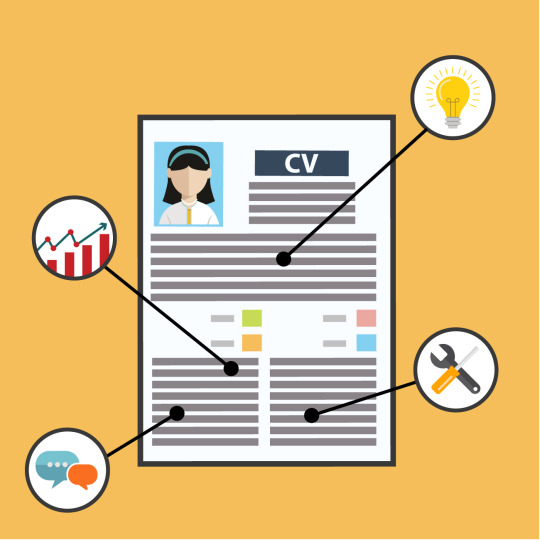#human resource management
Text
How to Become HR Professional?
Human Resource is a collection of people who build up who tend to manage the whole workplace. You will find these professionals looking after the economic, administrative, business, related tasks regularly. One of the major job roles of an HR professional is to recruit, hire, and train people in their organization. In the present scenario, this specific field is expanding at a rapid rate, and probably that’s why candidates also want to learn HR Training.
Have a look at some of the skills required in this field.
How To Improve Advanced HR Skills?
#HR Skills#Human Resource#Human resource Training#HR Training#Human resource Management#HRM training
2 notes
·
View notes
Text
Hello! guys, we are here to help you with your assignment, We have a team of professionals who help helps you with essays, homework, dissertation, thesis, proposal, research papers, programming help, and online exam.
Single Tutor

#assignment help#essay#dissertation#thesis#human resource management#computer science#programming#coding#engineering#information technology#pharmacy#sociology#commercial law
4 notes
·
View notes
Text
what is On Site HR Administration???
#jobs#jobsearch#online jobs#jobseekers#job interview#employment#inside job#job search#work#career#hr manager#hr management#humanresources#human resource management#human resource consulting#human resource services#human resource planning#hiring now#hiring and recruiting#hiring near me#hiring services#hiring process#recruitment#recruiting#hiring solutions#recruiters#hire#startup
1 note
·
View note
Text
Research Paper in Focus
Paper Title: Mapping Issues in Labor Economics: An Islamic Perspective for Research and Policy Development
Author: Mohd Nahar Mohd Arshad
Publisher: JKAU: Islamic Economics, Vol. 37 No. 1, 21 – 37.
The study illustrates the literature on labour economics from an Islamic perspective to identify the concentration of research, gaps in the literature, major difficulties to the…

View On WordPress
#Capitalism#Development Economics#Economic Policy#human resource management#human well being#Islamic Economics#Islamic labor markets#Islamic labor policies#Islamic Social Finance#Islamic Work Ethics#Labor Economics
0 notes
Text

Elevate Your HR Game with Our Complete HR Solution! Drive Engagement, Foster Growth, and Create a Workplace Where Everyone Thrives.
0 notes
Text
Specializations in PGDM: Way to Choosing Your Right Path
A Post Graduate Diploma in Management (PGDM) offers students the opportunity to specialize in various areas, catering to their interests, career objectives, and industry demands. These specializations include Marketing Management, Finance Management, Human Resource Management, and many more.

#pgdm#pgdm specialization#marketing#finance#human resource management#management#information technology#healthcare
1 note
·
View note
Text
PGDM vs. MBA: Understanding the Differences and Choosing the Right Path for Your Career
In the realm of management education, two prominent pathways stand out: the Post Graduate Diploma in Management (PGDM) and the Master of Business Administration (MBA). While both offer opportunities for career advancement and skill development, understanding the differences between these two qualifications is crucial for aspiring professionals aiming to chart their course in the dynamic world of business...Know More

#pgdm#what is pgdm#pgdm colleges#why pgdm#management#placement#marketing#finance#human resource management
1 note
·
View note
Text
Welcome to our website!
At Amika Softwares, we understand that the success of any organisation lies in its people. That’s why we are dedicated to providing top-notch HR consultancy services in Nagpur to help businesses achieve their goals through effective human resources management. With our expertise and experience, we aim to be your trusted partner in all aspects of HR.
Take the first step towards optimising your human resources management by partnering with Amika Softwares. Contact us today to discuss your HR needs and let us help you unlock the full potential of your workforce.
#ecommerce website development#human resource management#hr consultancy#hr consulting services#Human Resource Management#hr services
0 notes
Text
Im Human Resource Management (HRM) spielt die Personalverwaltung eine entscheidende Rolle. Hier laufen alle administrativen Fäden zusammen, sowohl für Mitarbeitende als auch für Führungskräfte. Wir erklären dir die strategische Bedeutung der Personalverwaltung, stellen ihre Ziele vor und präsentieren die passende Software dafür. Abonniere unseren Blog und erfahre mehr darüber. Was ist eigentlich Personalverwaltung? Welche Ziele verfolgt sie und welche Aufgaben gehören dazu? Erfahre, wie digitale Personalverwaltung das HR-Management effizienter macht und welche Rolle Datenschutz dabei spielt. Zusammenfassend: Die Personalverwaltung wird immer moderner.
#Human Resource Management#Personalverwaltung#Mitarbeitende#Führungskräfte#Strategische Bedeutung#Ziele#Aufgaben#Software#Blog#Datenschutz
0 notes
Text
Navigating Success: Human Resource Management and Strategic Outsourcing
In the dynamic landscape of modern business, effective human resource management plays a pivotal role in organizational success. This article explores the significance of human resource management strategies and the transformative impact of strategic outsourcing in optimizing workforce dynamics.
Understanding Human Resource Management Strategies
Defining Human Resource Management
Human resource management encompasses the strategic and operational aspects of managing an organization's workforce. It involves recruitment, training, performance evaluation, and fostering a positive workplace culture.
Crafting Human Resource Management Strategies
Successful organizations recognize the importance of aligning human resource management with business objectives. Strategic HR management involves developing plans and policies that not only comply with regulations but also contribute to the achievement of organizational goals.
The Role of Strategic Outsourcing in HR Management
Strategic Outsourcing Defined
Strategic outsourcing in human resource management involves entrusting specific HR functions to external experts. This approach enables organizations to access specialized skills, streamline processes, and focus on core business functions.
Enhancing Efficiency and Expertise
By opting for strategic outsourcing in human resource management, organizations leverage the expertise of professionals who are well-versed in HR practices. This enhances efficiency in payroll processing, benefits administration, and compliance management.
Synergizing Human Resource Management Strategies with Outsourcing
Aligning Business Goals
Integrating human resource management strategies with strategic outsourcing requires a seamless alignment of business goals. Organizations must communicate their objectives clearly to outsourcing partners, ensuring a shared vision for workforce management.
Optimizing Workforce Dynamics
Strategic outsourcing enhances the execution of human resource management strategies by providing real-time insights and analytics. This data-driven approach optimizes workforce dynamics, proactively addressing challenges and seizing opportunities.
Implementing Effective Human Resource Management: Practical Steps
Assessing HR Needs
Before embarking on strategic outsourcing in human resource management, organizations should thoroughly assess their HR needs. This involves identifying areas that require improvement, such as talent acquisition, employee engagement, or compliance management.
Selecting the Right Outsourcing Partner
Choosing a reliable outsourcing partner is crucial for successful human resource management. Organizations should look for providers with a proven track record, industry expertise, and a commitment to understanding and aligning with the company's values and goals.
Conclusion: Driving Organizational Excellence through HR Management Strategies
The synergy between effective human resource management strategies and strategic outsourcing is a potent recipe for driving organizational excellence. By aligning HR practices with business goals and leveraging external expertise, organizations can create a robust framework for workforce management. This approach ensures regulatory compliance and fosters a culture of continuous improvement and adaptability. As businesses navigate the complexities of the modern workforce, integrating strategic HR management and outsourcing emerges as a strategic imperative for sustainable success.
0 notes
Text
Scope of Human Resource Management Work
Human resource management (HRM) is a department that supports all work related to personnel within the organization to be able to perform their duties appropriately with the positions, duties and goals of the organization, from recruitment, preparation, evaluation and development. To achieve maximum benefit to the organization.
0 notes
Text
Crafting the Perfect Resume: A Step-by-Step Guide
Crafting a stellar resume is a crucial step towards landing your dream job. In today's competitive job market, a generic resume might not make the cut. To help you stand out, we've compiled a comprehensive guide on creating the perfect resume, ensuring it reflects your skills and qualifications effectively.

I. Introduction
A. Importance of a well-crafted resume
Your resume is your first impression on potential employers. It serves as a snapshot of your professional journey, highlighting your skills, achievements, and qualifications. A well-crafted resume is essential in capturing the attention of hiring managers and securing job interviews.
B. Overview of the article
This article will guide you through the step-by-step process of creating a compelling resume. From understanding the basics to customizing your resume for different roles, we've got you covered.
II. Understanding the Basics
A. What is a resume?
At its core, a resume is a document that showcases your education, work experience, skills, and achievements. It provides employers with a quick overview of your qualifications, making it an essential tool in the job application process.
B. Purpose of a resume
The primary purpose of a resume is to secure job interviews. It acts as a marketing tool, presenting you as the ideal candidate for a particular role. Your resume should effectively communicate why you are the best fit for the job.
C. Key components of a resume
A typical resume includes sections such as contact information, summary or objective statement, professional experience, education, skills, certifications, and achievements.
III. Researching Your Target Job
A. Importance of job research
Before crafting your resume, it's crucial to research the job you're applying for. Understand the company's values, culture, and the specific requirements of the role.
B. Identifying key skills and qualifications
Carefully analyze the job description to identify the skills and qualifications the employer is seeking. Tailoring your resume to match these requirements increases your chances of success.
C. Tailoring your resume to the job description
Customizing your resume for each application demonstrates your genuine interest in the position. Highlight relevant experiences and skills that align with the specific job requirements.
IV. Choosing the Right Resume Format
A. Types of resume formats
There are various resume formats, including chronological, functional, and combination. Choose the format that best showcases your career history and aligns with the job you're applying for.
B. Selecting the format that suits your career history
If you have a consistent work history, a chronological resume might be ideal. However, if you're changing careers, a functional or combination format could better emphasize your skills.
V. Crafting a Compelling Summary Statement
A. Importance of a summary statement
The summary statement is the first section employers read. Craft a concise and compelling summary that highlights your key qualifications and sets a positive tone for the rest of the resume.
B. Tips for writing an impactful summary
Keep your summary focused and relevant. Highlight your most significant achievements and emphasize how your skills align with the job you're applying for.
VI. Highlighting Professional Experience
A. Listing work experience in a chronological order
Present your work experience in reverse chronological order, starting with your most recent job. Include the name of the company, your position, and the dates of employment.
B. Showcasing achievements and responsibilities
Instead of merely listing job duties, focus on showcasing your achievements. Use quantifiable metrics to demonstrate the impact you had in previous roles.
C. Using action verbs for impact
Begin each bullet point with a strong action verb to make your accomplishments more dynamic. Words like "achieved," "implemented," and "managed" convey a sense of proactivity.
VII. Showcasing Educational Background
A. Where to place education on your resume
If you're a recent graduate or your education is highly relevant to the job, place the education section near the top. Otherwise, it can be positioned after the professional experience section.
B. Emphasizing relevant coursework and achievements
Highlight specific courses or academic achievements that are directly related to the job you're applying for. This provides additional context about your qualifications.
VIII. Skills Section: What to Include
A. Identifying and listing relevant skills
Create a dedicated skills section and include both hard and soft skills. Tailor this section to match the skills mentioned in the job description.
B. Importance of tailoring skills to the job
Ensure your skills align with the specific needs of the employer. This not only demonstrates your suitability for the role but also helps your resume pass through Applicant Tracking Systems (ATS).
IX. Adding Certifications and Achievements
A. How certifications enhance your resume
Include relevant certifications to showcase your commitment to professional development. This can set you apart from other candidates.
B. Highlighting notable achievements
Whether it's winning awards, completing significant projects, or exceeding targets, highlight any achievements that demonstrate your capabilities.
X. Crafting a Visually Appealing Resume
A. Choosing a clean and professional layout
Opt for a simple and clean design that is easy to read. Avoid overly elaborate fonts or excessive use of colors.
B. Selecting an appropriate font and font size
Choose a professional font such as Arial or Calibri and maintain a font size between 10 and 12 points for optimal readability.
C. Incorporating bullet points for readability
Bullet points make your resume scannable, allowing hiring managers to quickly identify key information. Use them to list responsibilities and achievements.
XI. Proofreading and Editing
A. Importance of proofreading
Errors in your resume can create a negative impression. Proofread carefully to catch typos, grammatical mistakes, and formatting issues.
B. Tools for effective editing
Utilize spelling and grammar checkers, and consider seeking feedback from peers or professional resume services to ensure your resume is flawless.
XII. Leveraging Keywords for Online Applications
A. Understanding ATS (Applicant Tracking System)
Many companies use ATS to filter resumes. Incorporate relevant keywords from the job description to increase your chances of passing through ATS.
B. Incorporating relevant keywords
Identify keywords specific to your industry and role and strategically place them throughout your resume. Strike a balance to maintain readability.
XIII. Seeking Feedback
A. Importance of seeking feedback
Ask for input from mentors, colleagues, or professional resume writers. Constructive criticism can help you refine your resume and improve its overall effectiveness.
B. How to incorporate constructive criticism
Consider the feedback you receive and make necessary adjustments. Continuous improvement is key to creating an outstanding resume.
XIV. Customizing Your Resume for Different Roles
A. Tailoring resumes for specific job applications
Avoid using a one-size-fits-all approach. Customize your resume for each application, emphasizing the skills and experiences most relevant to the job.
B. The impact of customization on success
Tailoring your resume demonstrates your commitment to the position, making you a more attractive candidate. It increases the likelihood of getting noticed and securing interviews.
XV. Conclusion
A. Recap of key points
Crafting the perfect resume involves understanding the basics, researching the job, and tailoring your application to stand out. A well-crafted resume significantly increases your chances of landing your desired job.
B. Encouragement for crafting a personalized resume
Remember, your resume is a reflection of your professional journey. Take the time to create a personalized document that showcases your unique skills and qualifications.
FAQs
How long should my resume be?
Aim for a concise resume, ideally one to two pages. Focus on highlighting relevant information to keep the reader engaged.
Is it necessary to include a summary statement?
While not mandatory, a well-crafted summary statement can capture the attention of hiring managers and provide a quick overview of your qualifications.
Should I include every job I've ever had?
Prioritize relevant work experience, but if you have a long career history, focus on the most recent and significant roles.
What font size and style are appropriate for a resume?
Stick to professional fonts like Arial or Calibri, with a font size between 10 and 12 points for optimal readability.
How often should I update my resume?
Regularly update your resume, especially after acquiring new skills, completing certifications, or achieving significant milestones in your career.
1 note
·
View note
Text
HR Policy Formulation: Nurturing a Productive Workplace

In the dynamic landscape of business, effective Human Resources (HR) policy formulation is crucial for fostering a healthy work environment. Companies recognize that a well-crafted HR policy not only ensures legal compliance but also contributes significantly to employee satisfaction and organizational success.
Importance of HR Policy
HR policies set the foundation for a company's culture and guide employees on what is expected of them. From recruitment practices to daily conduct, a comprehensive HR policy communicates the organization's values, fostering a sense of belonging among employees.
Key Components of HR Policy
Understanding the core elements of HR policies is vital. Components such as employee code of conduct, leave policies, and performance expectations shape the framework within which both employers and employees operate.
Crafting Effective HR Policies
Crafting effective policies involves striking a balance between clarity and flexibility. Policies should be concise, easy to understand, and capable of adaptation to changing business dynamics. The goal is to create guidelines that empower rather than restrict.
Legal Compliance in HR Policies
Navigating the legal landscape is integral to HR policy formulation. This includes adherence to labor laws, anti-discrimination regulations, and other legal requirements. Failure to comply can lead to legal repercussions and damage the company's reputation.
Employee Communication
Transparent communication is a linchpin in successful policy implementation. Regularly updating employees on policy changes, explaining the rationale behind decisions, and creating open channels for feedback foster a culture of trust and collaboration.
Training and Development
Investing in employee development is a strategic aspect of HR policies. Clearly outlining opportunities for training and growth not only enhances employee skills but also contributes to long-term employee retention.
Diversity and Inclusion
Inclusivity is a cornerstone of modern HR policies. Companies are recognizing the value of diverse perspectives and are incorporating policies that promote equality and inclusiveness, creating a workplace that celebrates differences.
Performance Evaluation
A well-defined performance evaluation system ensures fairness and motivates employees. Setting clear expectations, providing regular feedback, and recognizing achievements are vital components of an effective performance evaluation policy.
Grievance Handling
Establishing a robust grievance handling mechanism is essential. A fair and transparent process for addressing employee concerns can prevent conflicts from escalating, maintaining a positive workplace culture.
Technology Integration in HR
Leveraging technology in HR policies streamlines processes, making them more efficient. From automated leave management systems to AI-driven recruitment tools, integrating technology ensures accuracy and saves time.
Flexibility in HR Policies
Flexibility is key in a rapidly changing work environment. Policies should allow for adaptation, considering factors like remote work, flexible schedules, and other evolving trends that impact the modern workforce.
Case Studies: Successful Policies
Examining case studies of companies with successful HR policies provides valuable insights. Real-world examples showcase the positive impact of well-thought-out policies on employee satisfaction, retention, and overall organizational performance.
Common Mistakes to Avoid
Learning from others' mistakes is equally important. Highlighting common pitfalls in HR policy formulation helps companies avoid potential issues, ensuring their policies contribute positively to the workplace.
Conclusion
In conclusion, HR policy formulation is an art that requires a delicate balance between legal compliance, employee satisfaction, and organizational goals. Companies that invest time and effort in creating thoughtful, adaptable policies are better positioned for sustained success in today's competitive business environment.
FAQs
How often should HR policies be reviewed and updated?
Regular reviews, at least annually, ensure policies align with changing legal requirements and evolving organizational needs.
Are there industry-specific considerations in HR policy formulation?
Yes, different industries may have specific regulations and considerations that should be incorporated into HR policies.
How can technology enhance HR policies?
Technology can streamline processes, improve accuracy, and provide data-driven insights, enhancing the effectiveness of HR policies.
What role does employee feedback play in shaping HR policies?
Employee feedback is crucial; it fosters a sense of ownership, identifies areas for improvement, and ensures policies resonate with the workforce.
Can flexible HR policies positively impact employee morale?
Yes, offering flexibility in policies, such as remote work options, can boost morale, contributing to a positive work culture.
0 notes
Text

Human Resource Management in Derby UK
Human Resource Management in Derby UK serves as the linchpin for organizational excellence. Navigating the diverse talent pool, HR professionals in Derby play a crucial role in recruitment, employee engagement, and fostering a collaborative work environment. With a strategic approach to workforce optimization, Human Resource Management in Derby contributes to the city's business vitality, ensuring a skilled and motivated workforce propels companies towards success. Visit https://www.suregrowglobal.co.uk/ for details.
#Human Resource Management in Derby UK#Human Resource Management in Derby#Human Resource Management#Human Resource#jobs in care homes bury uk#care home jobs in bury uk
0 notes
Text
Enhancing Healthcare Efficiency with a Human Resource Management Module for Hospitals
Hospitals require efficient HR administration to meet patient care demands in an increasingly complicated healthcare environment. Hospitals can benefit from a Human Resource Management Module that simplifies procedures, raises staff satisfaction, and increases compliance. Hospitals can concentrate more on their primary goal of offering their populations high-quality healthcare by purchasing such a module.
0 notes
Text

Being a recruiter for a company involves sourcing, screening, and hiring candidates. Recruiters match job requirements with candidate skills, ensuring a strong fit for the organization. They manage the hiring process, from initial contact to onboarding, playing a vital role in building a skilled and diverse workforce. #Recruiter #Hiring #TalentAcquisition
#recruiting#recruiter#recruitment#recruiting agency#human resource management#recruiting agency bangladesh#human resource recruiting agency bangladesh#top 10 recruiting agency bangladesh#executive search service#head hunting#head hunting agency
0 notes